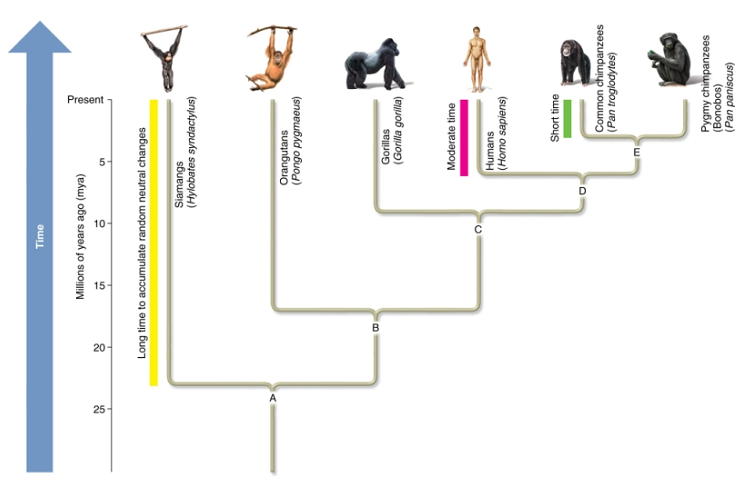The figure shows a simplified phylogeny of closely related species of primates. This tree was proposed by comparing DNA sequence changes in the gene for cytochrome oxidase subunit II. The vertical scale represents time and the branch points represent common ancestors. What species did ancestor B give rise to?

A. Siamangs and orangutans.
B. All of the species except orangutans.
C. All of the species except siamangs.
D. All of the species except siamangs and pigmy chimps.
C. All of the species except siamangs.
You might also like to view...
In the human retina, _____
A) cone cells can detect color, but rod cells cannot B) cone cells are more sensitive than rod cells to light C) cone cells, but not rod cells, have a visual pigment D) rod cells are most highly concentrated in the center of the retina E) rod cells require higher illumination for stimulation than do cone cells
You have been a sample of Mimivirus, which has the largest capsid diameter of all currently known viruses (600 nm) and is hexagon shaped (icosahedral). Based on your knowledge of microscopes, what would you be able to see/determine about mimiviral structure using each of the following microscopes?
a. simple compound (light) microscope b. fluorescent microscope using fluorescently labeled antibodies to a novel capsid protein c. magnetic resonance force microscope
Mannitol salt agar (MSA) only allows the growth of halophiles (salt-loving microbes). Among the halophiles, mannitol fermenters release acid that turns the pH indicator yellow; mannitol nonfermenters leave the medium red. Onto MSA you inoculate a halophilic mannitol fermenter, a nonhalophilic mannitol fermenter, and a halophilic mannitol nonfermenter. Thus, the medium is acting as a ________ medium.
A. differential B. selective C. selective and differential D. neither selective nor differential
Mosquito-transmitted roundworms cause a tropical disease called ____.
A. trematodiases B. human echinococcosis C. lymphatic filariasis D. onchocerciasis E. dracunculiasis